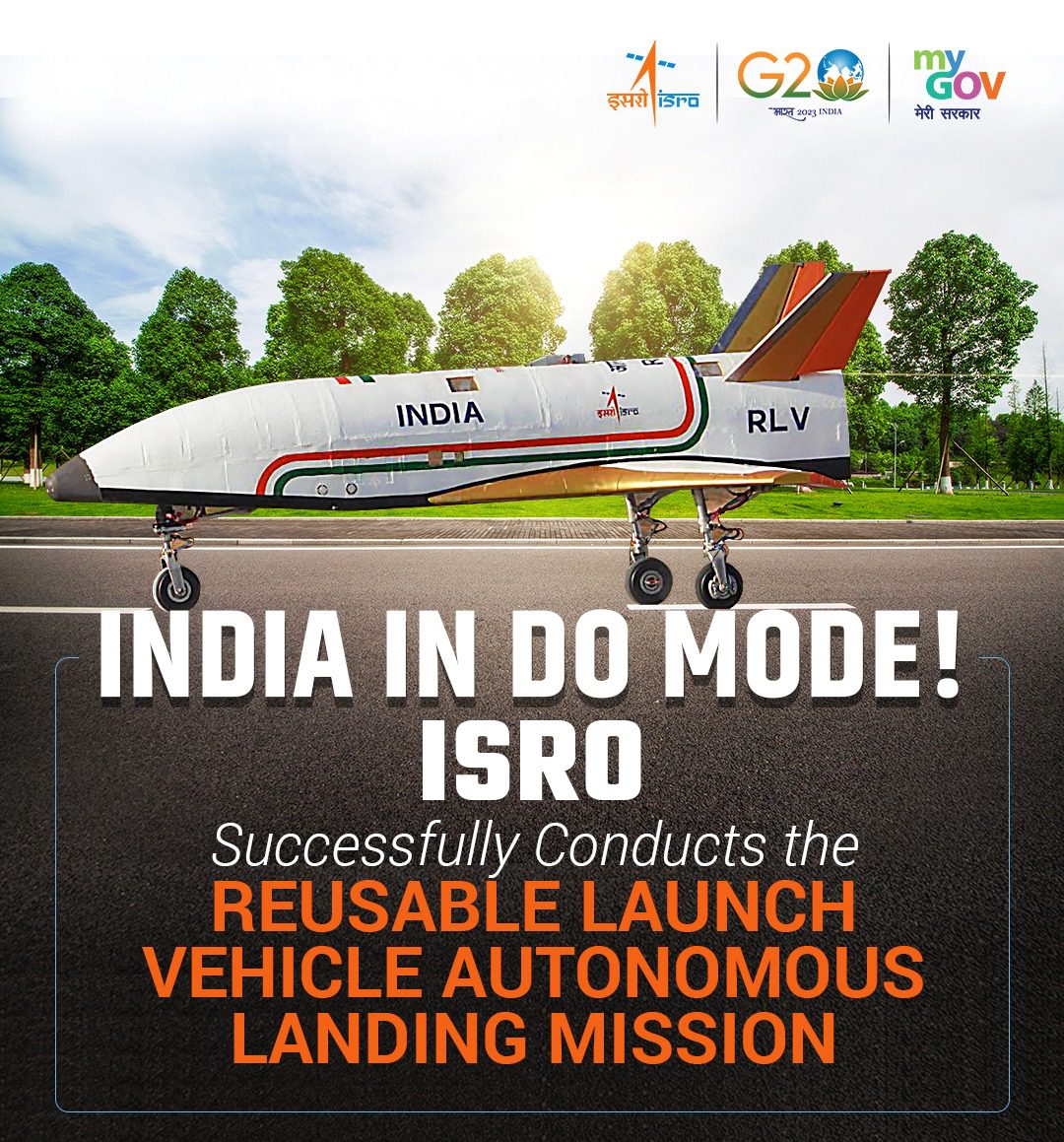While India and ISRO are known for their cost-effective space missions and ability to send as many satellites in a rocket as possible, their endless possibilities along with innovation are never-ending. So, recently ISRO has been testing autonomous landing of space vehicles, which by the way could be helpful as we try to scan various planets in future, landing a rover or object into the planet is a crucial part.
India’s Historic Milestone: Autonomous Landing of Space Vehicle Achieved by ISRO!
So, on Sunday, the Indian Space Research Organisation (ISRO) announced the successful completion of the Reusable Launch Vehicle Autonomous Landing Mission (RLV LEX) at the Aeronautical Test Range (ATR) in Chitradurga, Karnataka. The test marked a significant milestone as it was the first time in the world that a winged body was lifted to an altitude of 4.5 km by a helicopter and released for autonomous landing on a runway.
The RLV is essentially a space plane with a low lift-to-drag ratio, requiring a landing at high velocities of 350 kmph and high glide angles. The vehicle was taken to the designated height of 4.5 km by a Chinook helicopter of the Indian Air Force (IAF) as an underslung load, and once the predetermined pillbox parameters were achieved, the RLV was released mid-air at a downrange of 4.6 km.
The cool part is the release was autonomous, and the vehicle performed approach and landing manoeuvres using the Integrated Navigation, Guidance & Control system before completing an autonomous landing on the ATR airstrip at 7:40 AM IST. The landing was carried out under exact conditions similar to those of a space re-entry vehicle landing, such as high speed, unmanned, and precise landing from the same return path.
As we get more autonomous in the future, carrying out missions in the most unmanned way will play a key in the space industry of the future, so as India dreams to make a mark in Space Research, this little but important test could play an important part in future.
via Business Insider








